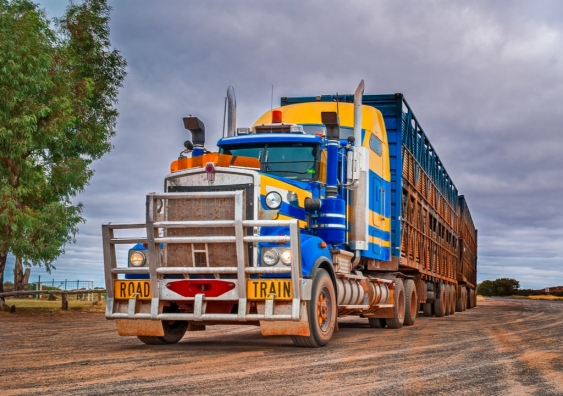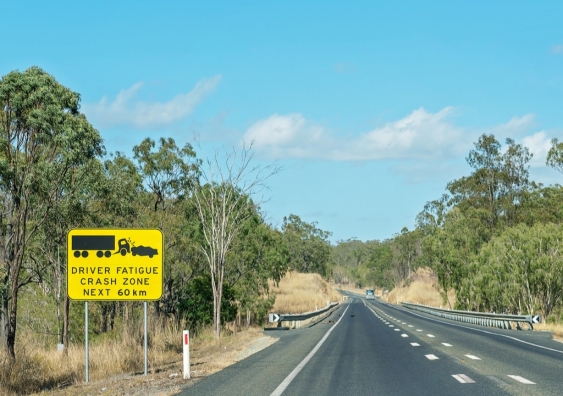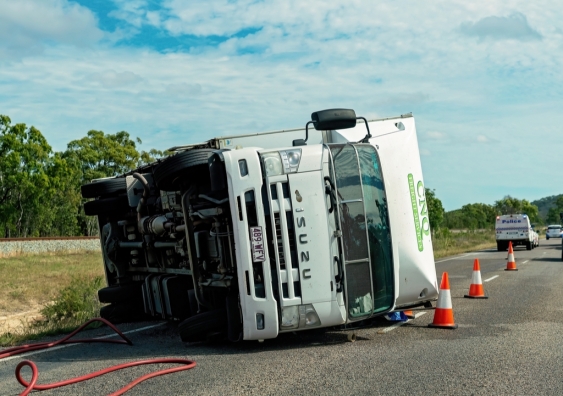Eight important ways to improve safety in the road transport industry
Road transport has one of the worst safety records in Australia and a range of steps that must be taken to address this, says UNSW Business School's Michael Quinlan.
Road transport has one of the worst safety records in Australia and a range of steps that must be taken to address this, says UNSW Business School's Michael Quinlan.

The road transport industry consistently records some of the highest fatality, injury and workers’ compensation rates in Australia, and UNSW Business School Emeritus Professor Michael Quinlan said it is high time underlying causal issues were addressed.
“There is now published research stretching over 40 years dealing with the relationship between payment systems/levels, subcontracting and an array of OHS outcomes in the road transport industry,” said Prof. Quinlan.
“This research has, with few exceptions (as would be expected), repeatedly pointed to an association between performance-based payment regimes and poor OHS outcomes, including crashes, injuries, drug-use, hazardous behaviour and the like.”
Road transport has the highest incidence of work-related fatal traumas of any industry and is one of three sectors that accounts for most work-related fatalities (over 70 per cent of the total in some years).
Prof. Quinlan recently spoke as part of an Australian Senate Inquiry examining matters concerning the road transport industry’s economic sustainability and presented a submission on the need for more effective preventive measures on the part of the government and regulators as well as the social and economic impact of road-related injury, trauma and death.

Drivers not paid for all hours can tend to make up for their loss by working extra hours or extra jobs. Photo: Shutterstock
In researching links between pay, subcontracting and safety in the trucking industry, he reviewed 20 papers in refereed journals, three PhDs and one refereed conference paper, and of those, 15 papers dealt directly with a connection.
“All of those studies found that there was a connection between pay, reward systems and safety,” said Prof. Quinlan, who noted this is not a unique relationship as there have been connections established between pay and safety in other industries.
“This makes denial that there is a connection particularly surprising. However, the evidence in trucking is now quite substantial.”
In examining the research, Prof. Quinlan said distance-based rates of pay in the road transport industry are associated with the poorest safety performance, while piece-rate compensation methods are also associated with higher levels of fatigue-related driving than non-piece-rate methods.
Furthermore, there is higher caffeine and amphetamines use among piece-rate drivers for the purpose of staying awake while driving.
Prof. Quinlan also referenced UNSW Sydney research which confirmed the importance of ensuring that drivers are paid for all hours worked, regardless of the task or activity.
Drivers not paid for all hours can tend to make up for their loss by working extra hours or extra jobs, and importantly, if they are paid on the basis of productivity, the researchers found they may be more likely to take risks such as speeding and driving long hours.
“Clearly, one thing we need to do is effectively regulate the supply chains and also ensure that there is a reasonable level of pay in the industry, irrespective of employment status, so that owner-drivers get a reasonable return and small companies are not squeezed, and the competition between owner-drivers and the employee drivers doesn’t lead to a race to the bottom with significant adverse effects on health and safety,” said Prof. Quinlan.
“In my view, that would make a more sustainable industry, make trucking a more attractive career and service the regional sector much better.”

Trucking is one of the most dangerous occupations and the impacts on families are profound. Photo: Shutterstock
Prof. Quinlan said there are eight important factors that must be addressed if the road transport industry is to become safe, sustainable and more efficient:
an enforceable minimum award rate and sustainable standards and conditions for all stakeholders in the road transport industry;
the development and maintenance of road transport infrastructure to ensure a safe and efficient road transport industry;
regulatory impact, including the appropriateness, relevance and adequacy of the legislative framework, on all stakeholders in the road transport industry;
training and career pathways to support, develop and sustain the road transport industry;
the full social and economic impact of road-related injury, trauma and death should be recognised;
efficient cost-recovery measures for industry stakeholders, including subcontractors;
the impact of new technologies and advancements in freight distribution, vehicle design, road safety and alternative fuels; and
the importance of establishing a formal consultative relationship between the road transport industry and all levels of government in Australia.
For more information please visit UNSW Business School’s BusinessThink.